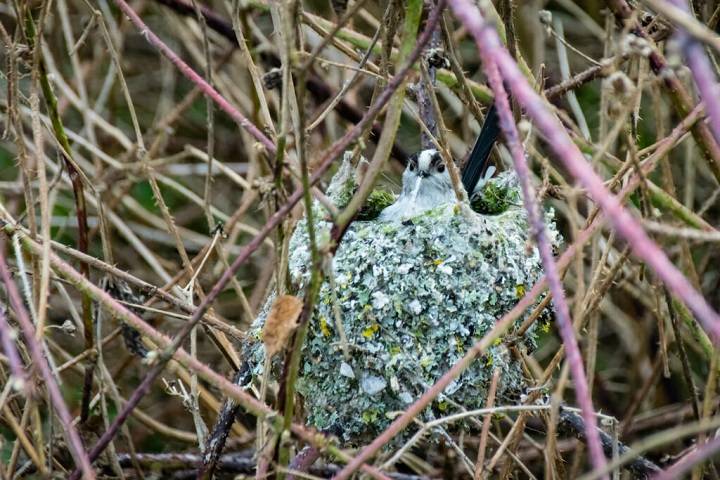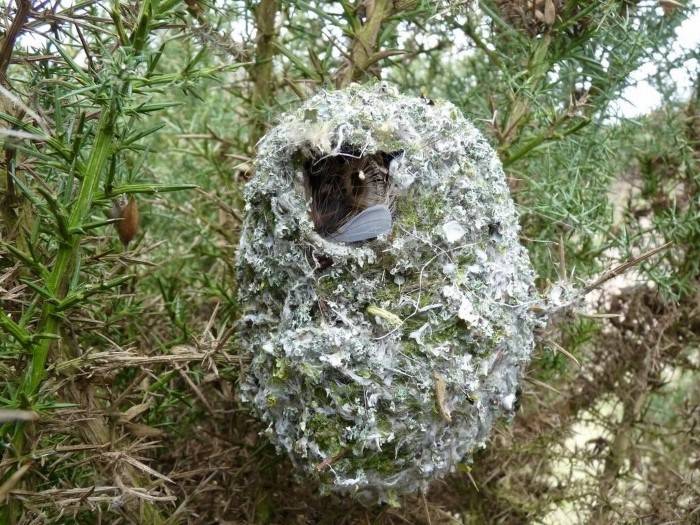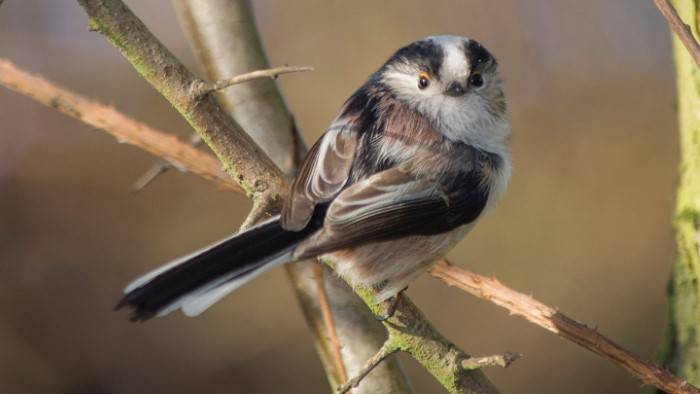Nestled amidst the branches of trees and shrubs, the delicate and intricately woven nests of long-tailed tits (Aegithaloscaudatus) stand as remarkable examples of avian craftsmanship. These tiny, energetic birds, known for their long tails and distinctive vocalizations, create nests that are marvels of engineering and ingenuity. In this comprehensive exploration, we venture into the fascinating world of long-tailed tit nests, uncovering the secrets of their construction, the materials used, and the role they play in the breeding success of these charismatic songbirds.
The Natural History of Long-Tailed Tits
Appearance and Behavior:
Long-tailed tits are small passerine birds characterized by their long, slender tails, fluffy plumage, and distinctive black and white markings. They are highly social birds, often found foraging in small, noisy flocks as they search for insects, spiders, and other invertebrates to feed on.
Breeding Season:
Long-tailed tits typically breed from late winter to early summer, with peak nesting activity occurring between March and May. During this time, breeding pairs establish territories, build nests, and raise their young in preparation for the next generation.
The Art of Nest Building
Location Selection:
Long-tailed tits are selective when it comes to choosing nest sites, preferring dense vegetation such as hedges, thickets, and scrubland. Nests are often situated several meters above the ground, providing protection from predators and adverse weather conditions.
Nest Construction:
Long-tailed tit nests are masterpieces of avian architecture, meticulously constructed from a variety of materials including moss, lichen, spider silk, feathers, and plant fibers. The outer shell of the nest is formed from an intricate lattice of spider silk and moss, while the interior is lined with soft feathers and hair for insulation and comfort.
The Role of Spider Silk
Spider Silk as Building Material:
Spider silk is a crucial component of long-tailed tit nests, providing strength, flexibility, and adhesive properties that help hold the nest together and anchor it to the surrounding vegetation. The silk is harvested from spider webs and carefully woven into the structure of the nest, adding stability and resilience.
Benefits of Spider Silk:
The use of spider silk in nest construction offers several advantages for long-tailed tits, including enhanced durability, protection from predators, and insulation against temperature fluctuations. Additionally, the antimicrobial properties of spider silk may help reduce the risk of disease transmission within the nest.
Nesting Success and Challenges
Breeding Success:
Long-tailed tit nests play a crucial role in the breeding success of these birds, providing a safe and secure environment for incubating eggs and raising young. The structural integrity and insulation provided by the nest help protect eggs and chicks from predators, inclement weather, and other environmental threats.
Predation and Nest Failure:
Despite their careful construction, long-tailed tit nests are not immune to predation and other risks. Nest predation by mammals, birds of prey, and other predators can pose a significant threat to nesting success, resulting in nest failure and reproductive losses for breeding pairs.
Long Tailed Tit Nests
Conservation and Management Implications
Habitat Management:
Conservation efforts aimed at preserving and enhancing suitable nesting habitat for long-tailed tits are essential for maintaining healthy populations of these birds. This may include maintaining hedgerows, woodlands, and other natural habitats, as well as creating artificial nest boxes to supplement natural nesting sites.
Predator Control:
Mitigating the impact of nest predators through targeted management strategies, such as predator exclusion devices or habitat modification, can help reduce nest predation rates and improve nesting success for long-tailed tits and other vulnerable species.
Related Post:
The nests of long-tailed tits stand as testament to the remarkable adaptability and resourcefulness of these charming songbirds. From their meticulously woven structures to the strategic use of materials like spider silk, long-tailed tits demonstrate a mastery of nest building that ensures the survival of future generations. As stewards of our gardens and woodlands, long-tailed tits enrich our lives with their presence and remind us of the intricate web of life that surrounds us. By understanding and appreciating the intricacies of their nesting behavior, we can better protect and conserve these beloved birds for generations to come.




